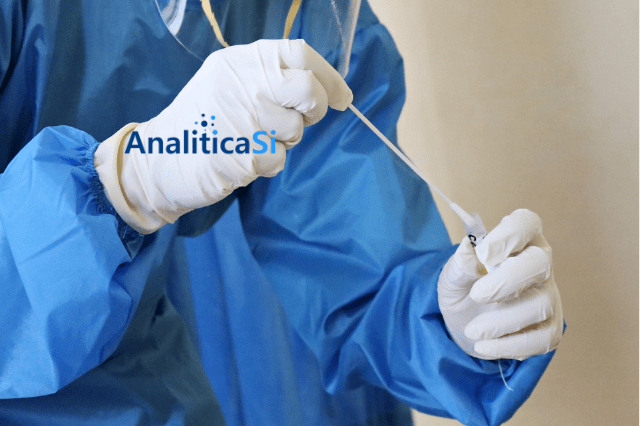PCR (polymerase chain reaction) is a method of developing a short sequence of DNA (or RNA) in samples containing only minute amounts of DNA or RNA. RT PCR testing is used to reproduce (develop) selected sections of DNA or RNA.
Previously, the amplification of DNA involved the addition of segments of interest in vectors for expression in bacteria and took weeks. But now, with PCR Testing performed in test tubes, it only takes a few hours. PCR is highly efficient in that DNA can be produced in untold numbers of copies. Furthermore, PCR testing uses the same molecules that nature uses to mimic DNA.
- 2 “primer”, short single-stranded DNA sequences that correspond to the beginning and end of the DNA stretch to be copied.
- An enzyme called polymerase that runs along a segment of DNA reads its code and assembles a copy, And
- A stack of DNA building blocks requires polymerase to make that copy.
How to do PCR Testing?
As depicted in the animated photo of PCR, a PCR consists of three major steps. These 3 steps are repeated for 30 or 40 cycles. The cycle is performed on an automatic cycler, a device that heats and cools test tubes containing rapid reaction mixtures. Each phase – denaturation (change of structure), annealing (joining), and expansion – occurs at a different temperature.
- Degradation: At 94 C (201.2 F), double-stranded DNA melts and opens into two fragments of single-stranded DNA.
- Annealing: At medium temperature, around 54 C (129.2 F), primers pair (anneal) with a single-stranded “template” (the template is a sequence of DNA to be copied.) At short lengths of double-stranded. The DNA (inserted primer and template) engages the polymerase and starts copying the template.
- Extension: At 72 C (161.6 F), Polymerase works best, and the template’s complementary DNA building blocks are coupled to the primer, forming a double-stranded DNA molecule.
With a cycle, a single segment of a double-stranded DNA template is amplified into two separate fragments of two-stranded DNA. Both these pieces are available for amplification in the next cycle. As the cycle is repeated, more and more copies are produced and the number of copies of the template increases exponentially.
Purpose of doing PCR Testing:
To perform PCR testing, the original DNA that it wishes to copy does not have to be pure or abundant. It can be pure but it can also be a minute part of a mixture of ingredients. Therefore, PCR has found widespread and myriad uses – for diagnosing genetic diseases, DNA fingerprinting, finding bacteria and viruses, studying human development, cloning DNA of Egyptian mummies, establishing paternity or biological relationships, etc. Accordingly, PCR has become an essential tool for biologists, DNA forensic labs, and many other laboratories that study genetic material.
How was the PCR Discovered?
PCR testing was invented by Carrie Mullis. At the time he thought of PCR in 1983, Mullis was working for Kate’s in Emeryville, California, one of the first telecommunications companies. There, he was accused of making short chains of DNA for other scientists. Mullis wrote that he imagined PCR hovering on Pacific Coast Highway 128 on his motorcycle one night.
He was playing with a new way of investigating mutations in DNA in his brain when he realized that he had invented a method of magnifying a DNA region. Mullis has stated that before his motorcycle journey ended, he was already influencing the Nobel Prize prospects. He shared the Nobel Prize in Chemistry with Michael Smith in 1993.
As Mullis wrote in Scientific American: “Starting with a single molecule of genetic material DNA, PCR can produce 100 billion identical molecules in one afternoon. The reaction is easy to execute. It doesn’t take more than a test tube. Is required. Some simple reagents, and a source of heat. “


One response
Hi there I am so glad I found your blog, I really found you by accident, while I was looking on Digg for something else, Regardless I am here now and would just like to say thank you for a remarkable post and a all round exciting blog.